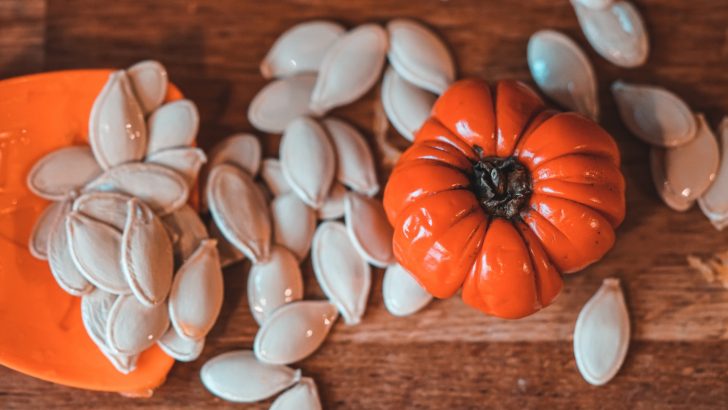If you think beef is the best source of iron, think again! Whether you’re looking to diversify your diet or simply want to boost your iron intake, a world of delicious and iron-rich foods awaits. From vibrant vegetables to delectable seeds, these 28 food ideas will surprise and delight your palate, offering more iron than you might expect from a steak.
Let’s explore these nourishing options and uncover how they can enhance your meals with flavor and nutrition.
1. Spinach
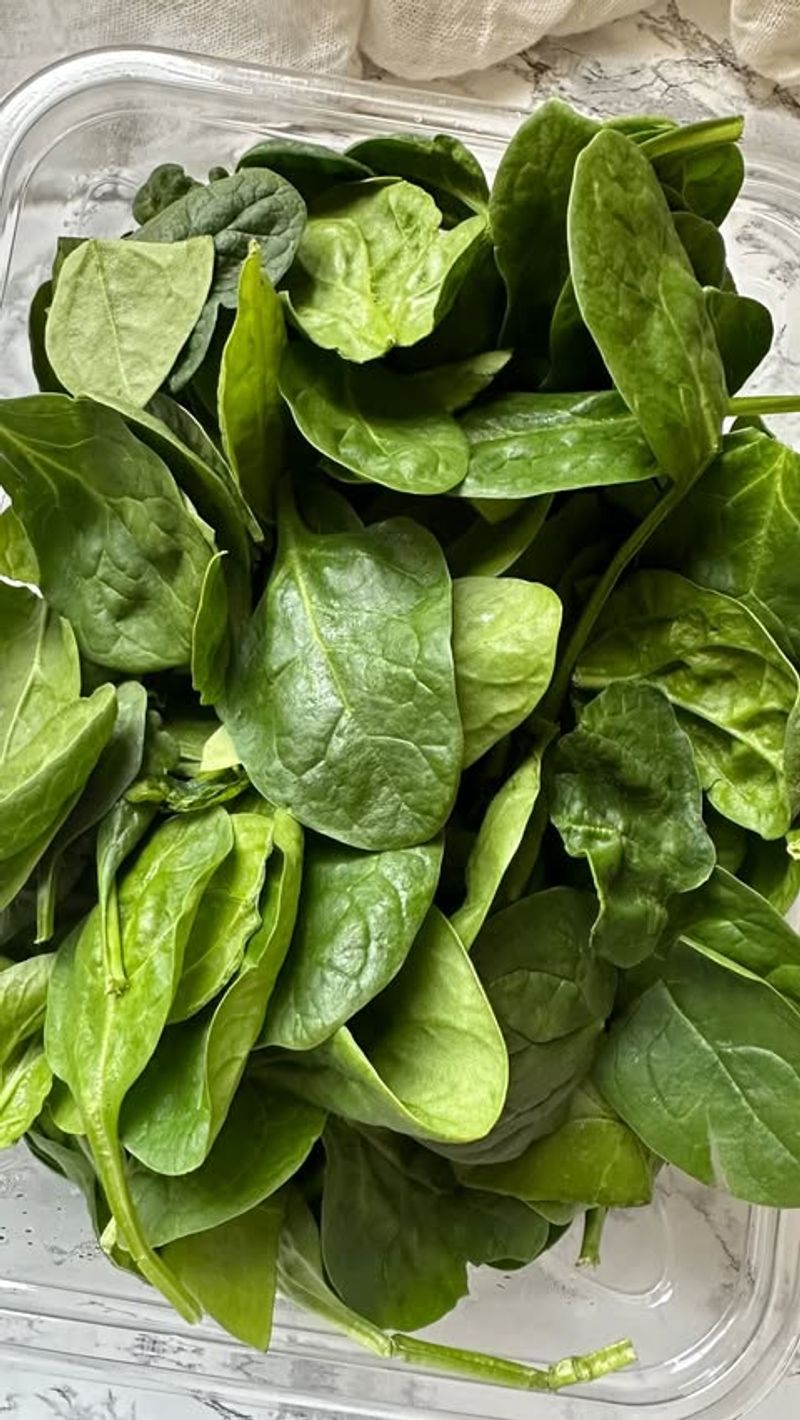
How often have you considered the power of spinach? This leafy green isn’t just for salads; it’s a mighty source of iron, surpassing beef in its nutrient density. Where dishes call for a verdant flourish, spinach steps in with its mild flavor and tender texture.
In addition to iron, spinach offers a bounty of vitamins and minerals, making it a powerhouse for health. Whether you enjoy it fresh or cooked, this versatile green adapts to countless recipes, enhancing everything from smoothies to savory pies.
Therefore, next time you’re in the kitchen, consider reaching for spinach. It’s an effortless way to elevate your iron intake while enjoying a taste of garden-fresh goodness.
2. Lentils
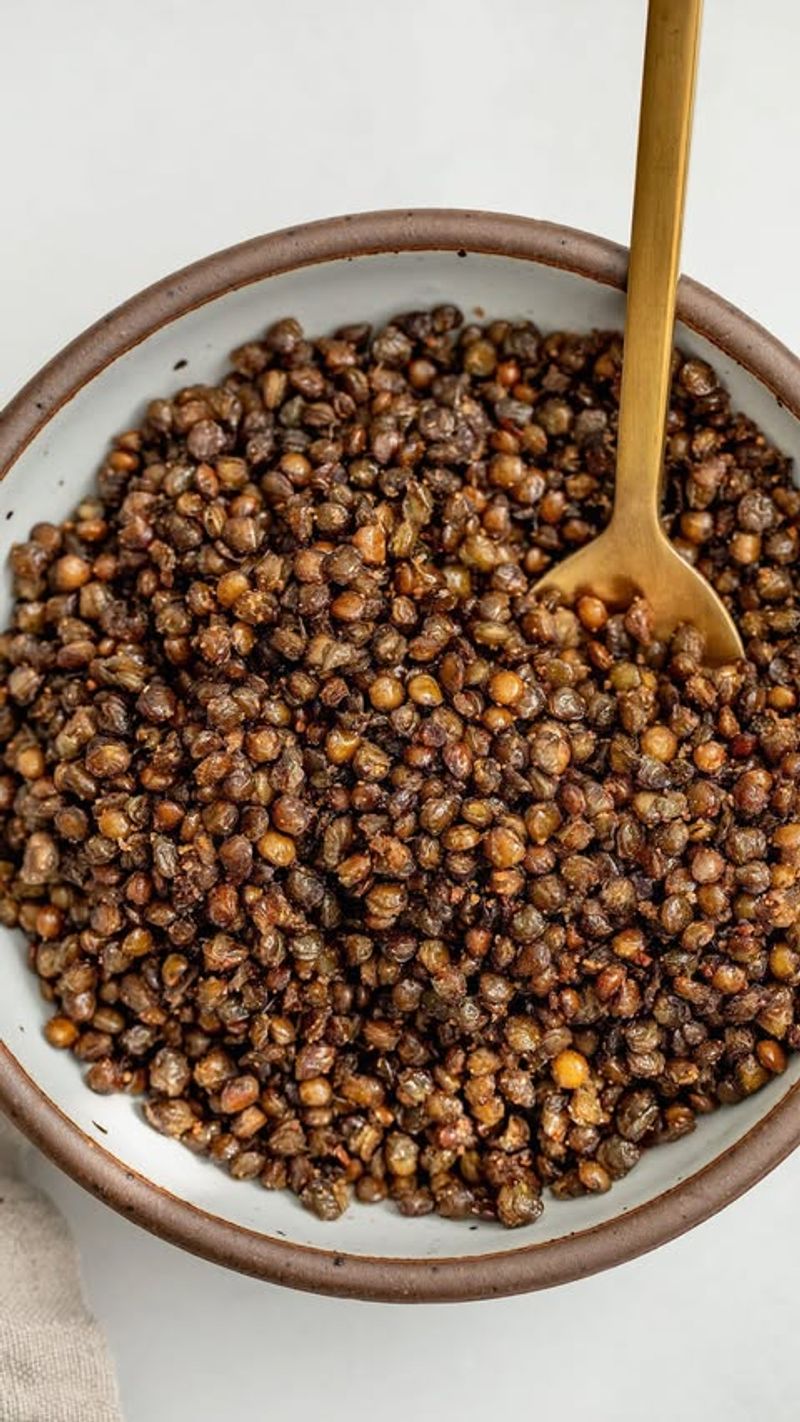
Lentils, those tiny legumes, might just be your new best friend in the quest for iron. As a staple in many cuisines, lentils provide a comforting texture and earthy flavor that complement a variety of dishes.
Though small, they pack a significant iron punch, making them a perfect alternative to beef. Whether in soups, stews, or salads, lentils add a satisfying element to your meals while contributing essential nutrients.
Furthermore, they’re easy to prepare and budget-friendly, fitting seamlessly into weeknight dinners. So, if you’re eager to explore new culinary horizons, give lentils a try. Their adaptability and nutritional benefits make them an invaluable addition to your pantry.
3. Chickpeas
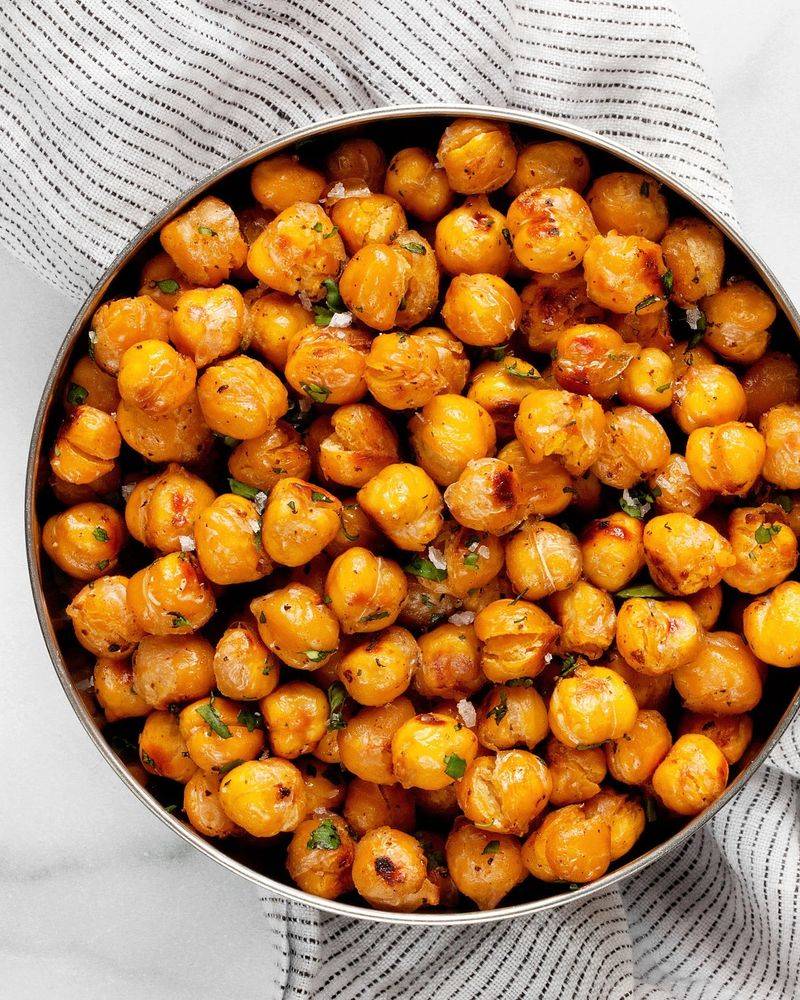
Have you ever savored the nutty taste of chickpeas? These delightful legumes are not only a versatile ingredient but also an iron-rich gem. Whether blended into hummus or roasted for a crunchy snack, chickpeas offer more than meets the eye.
Packed with fiber and protein, chickpeas provide a wholesome boost to your diet. Their ability to absorb flavors makes them a popular choice in Mediterranean and Middle Eastern cuisines, enhancing a wide array of dishes.
Hence, if you’re seeking a delicious and nutritious iron source, chickpeas are worth considering. They invite creativity in the kitchen and support a balanced, iron-rich diet with ease.
4. Quinoa
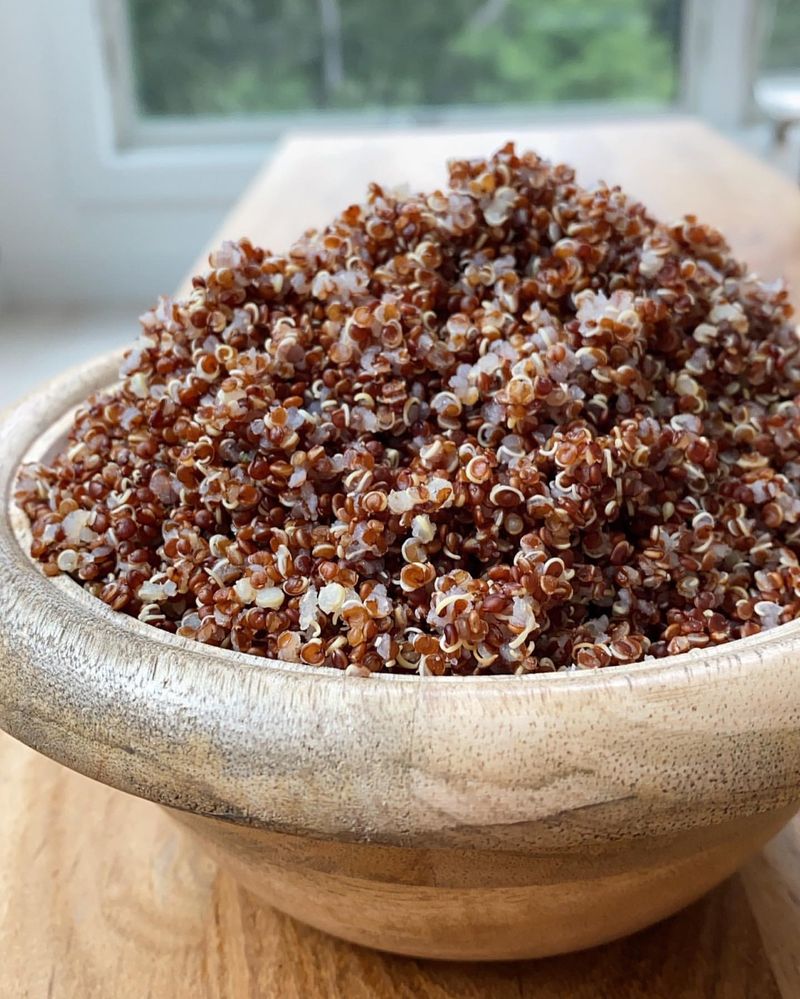
Quinoa, often hailed as a superfood, deserves a place in your pantry for its impressive iron content. This ancient grain, with its delicate texture and nutty flavor, offers a delightful change from the ordinary.
If you’re tired of traditional grains, quinoa provides an exciting alternative that doesn’t compromise on nutrition. Rich in protein, fiber, and essential minerals, it’s perfect for salads, bowls, or side dishes.
Moreover, quinoa’s versatility means you can enjoy it sweet or savory. So, why not experiment with quinoa in your next meal? Its iron-rich profile and culinary flexibility make it an exciting addition to any diet.
5. Pumpkin Seeds
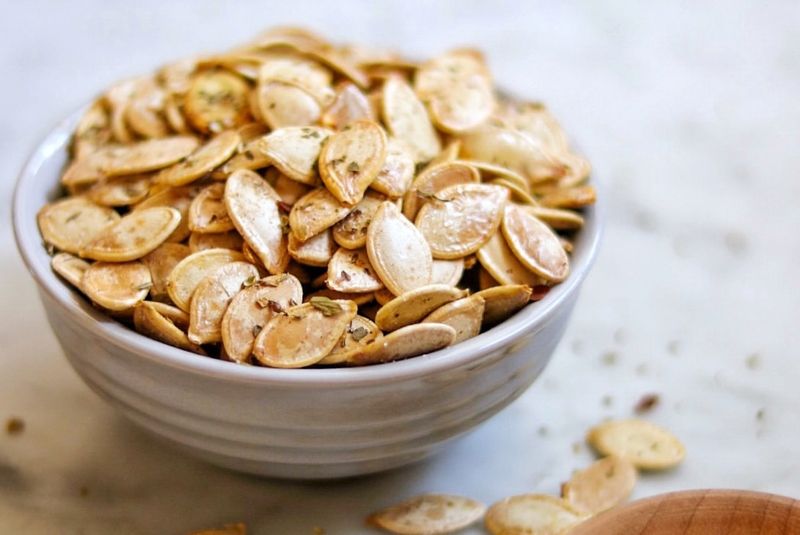
Where does the humble pumpkin seed fit into your diet? Often overlooked, these tiny seeds are packed with iron, offering an impressive nutrient profile that rivals beef. Their rich, nutty flavor adds a delightful crunch to salads, oatmeal, or yogurt.
In addition to iron, pumpkin seeds provide healthy fats and magnesium, supporting overall well-being. As a convenient snack or a creative topping, they can easily elevate your meals with both taste and nutrition.
Therefore, next time you carve a pumpkin, save those seeds. Toasting them lightly brings out their natural flavors, transforming a simple seed into a culinary treasure rich in iron.
6. Tofu
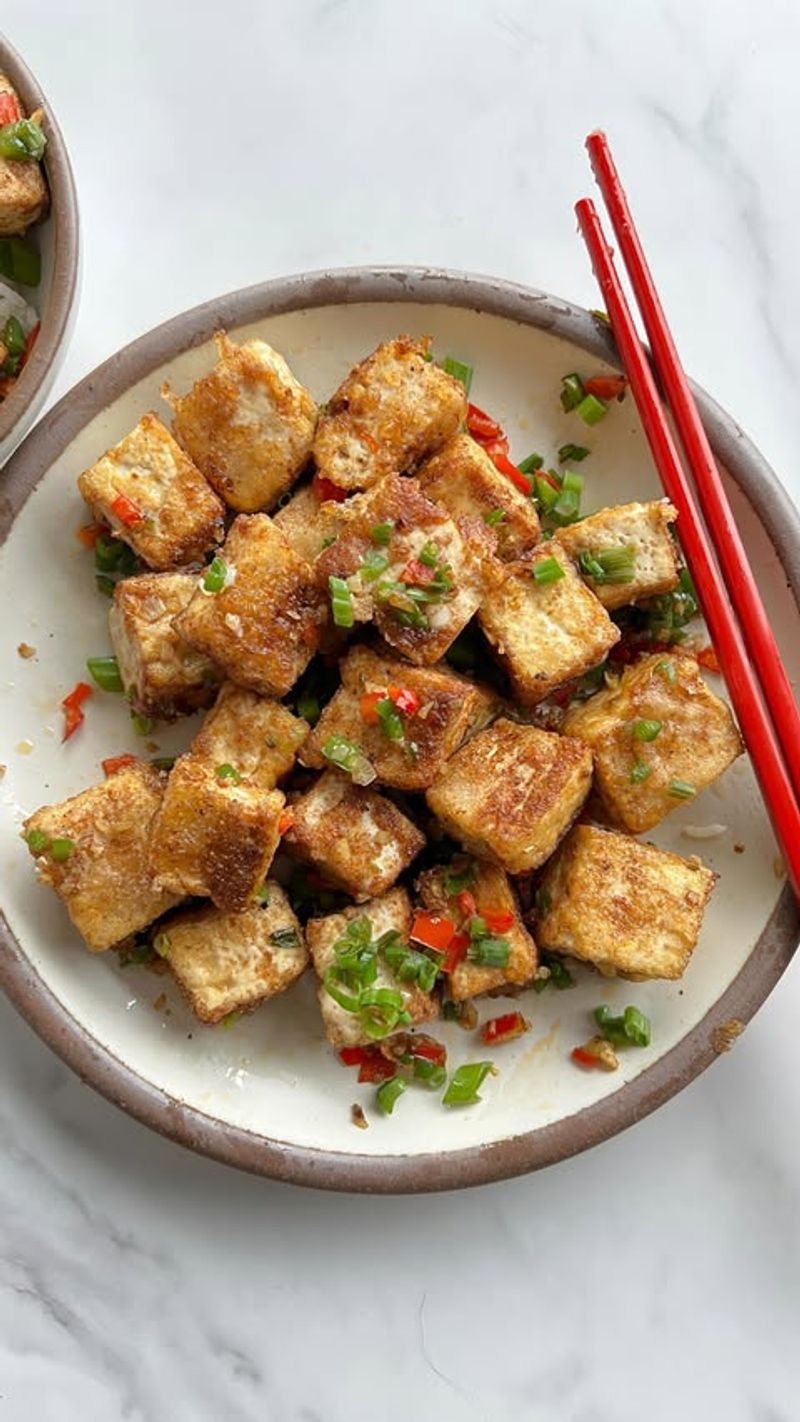
Tofu, a staple in vegetarian and vegan diets, is often praised for its versatility and iron content. Made from soybeans, tofu offers a smooth texture and ability to absorb flavors, making it a favorite in many global cuisines.
Whether grilled, stir-fried, or simmered in soups, tofu adapts to any culinary style. Its iron-rich profile ensures you meet your nutritional needs without sacrificing taste.
In addition, tofu provides a valuable source of plant-based protein, complementing a well-rounded diet. So, if you’re exploring plant-based options, consider incorporating tofu. Its simplicity and nutritional benefits make it a delightful choice for any meal.
7. Dark Chocolate
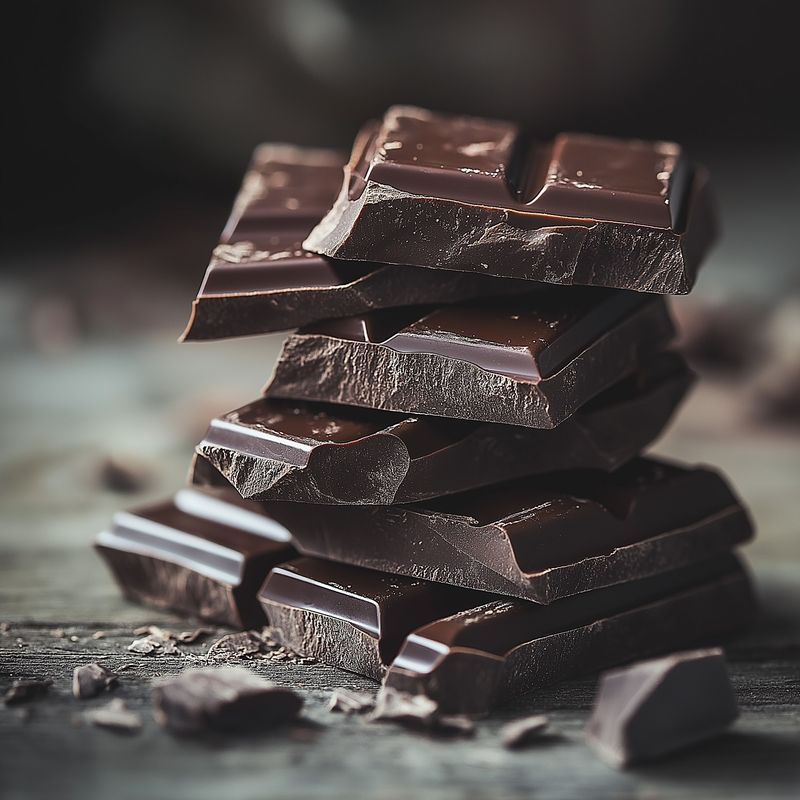
However, indulgence and nutrition can coexist, as proven by dark chocolate. This delightful treat offers more than just a sweet escape; it’s a surprising source of iron, making it a guilt-free addition to your diet.
With its rich, complex flavors, dark chocolate elevates desserts and snacks alike, providing a sophisticated touch to any occasion. Its antioxidant properties further enhance its appeal, supporting overall health while satisfying cravings.
Thus, next time you reach for a treat, consider dark chocolate. With its combination of flavor and nutrition, it’s a delightful way to boost your iron intake without compromising on taste.
8. Black Beans
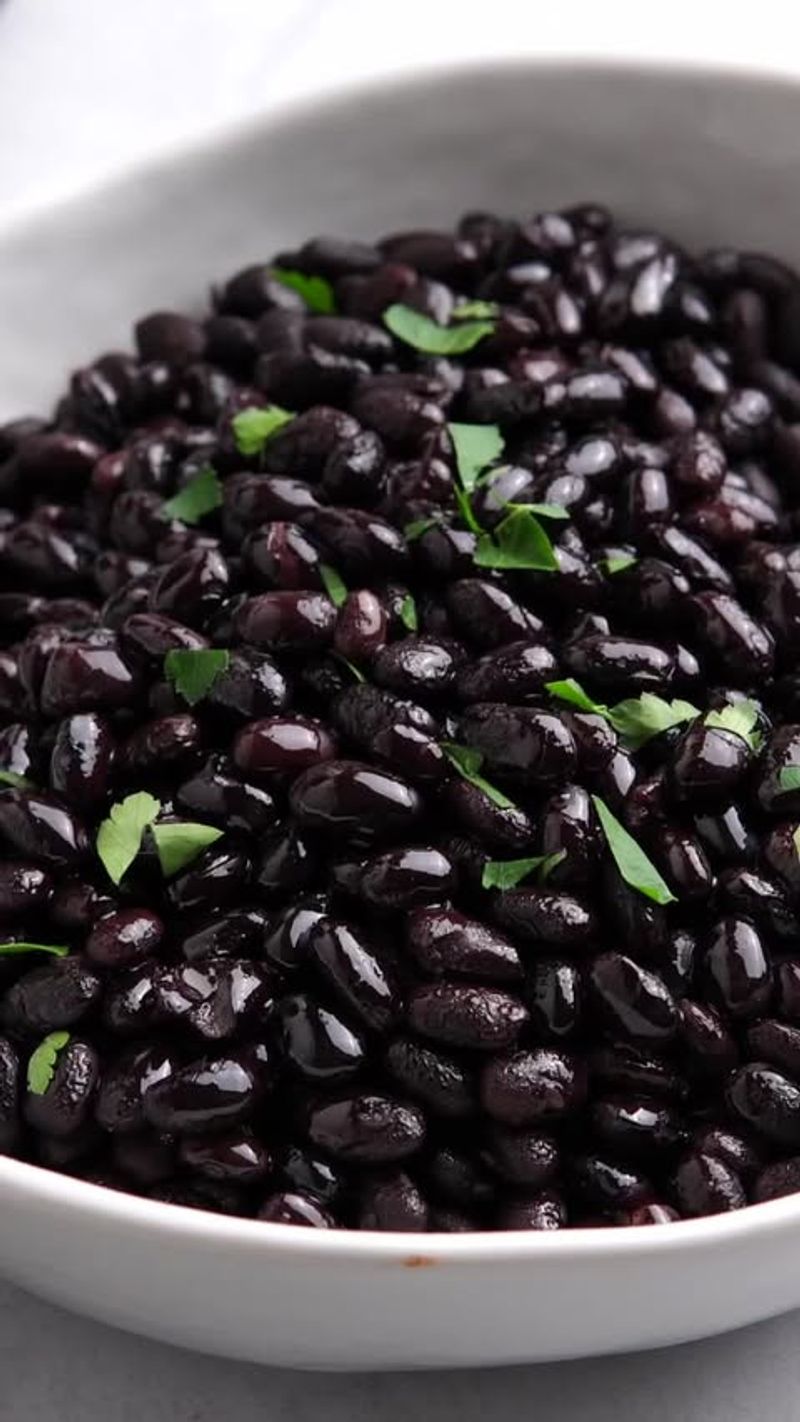
Black beans, a staple in Latin American cuisine, bring a robust flavor and rich texture to your meals. Not only are they delicious, but their iron content surpasses that of beef, offering an excellent plant-based alternative.
Whether crafted into a hearty chili or blended into a smooth dip, black beans deliver a nutritional boost that’s hard to ignore. Their rich, earthy taste complements a variety of dishes, making them a versatile pantry staple.
Additionally, black beans are high in fiber and protein, supporting a balanced diet. So, if you’re seeking a flavorful iron source, look no further than these versatile legumes.
9. Sesame Seeds
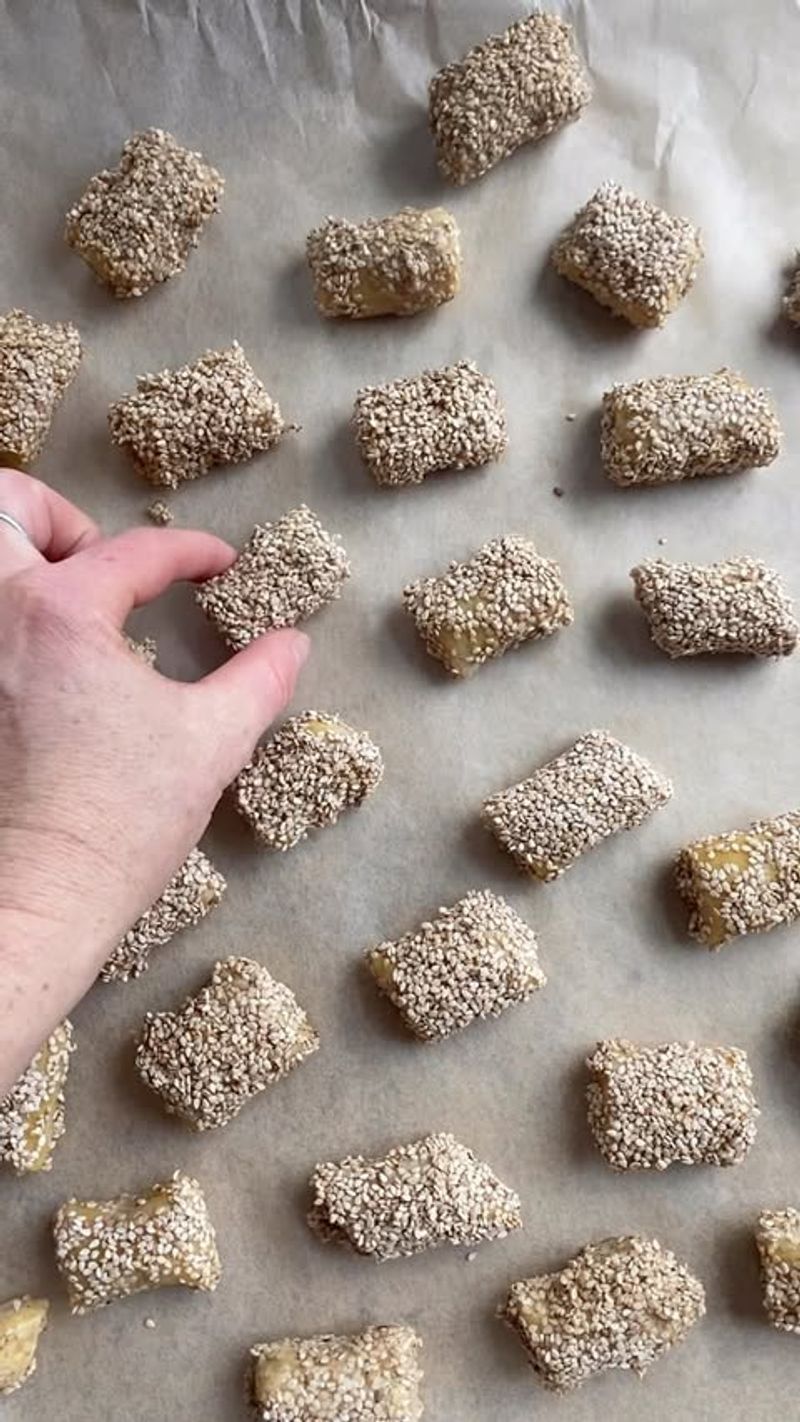
Sesame seeds, small yet mighty, provide an iron-rich addition to your diet. These seeds, with their subtle nutty flavor, enhance a variety of dishes, from baked goods to Asian-inspired meals.
How can you incorporate these nutrient-dense seeds into your meals? Sprinkle them over salads, stir fry, or even toast them for a delightful crunch. Their versatility means endless possibilities for culinary creativity.
Furthermore, sesame seeds are a source of healthy fats and calcium, supporting overall wellness. If you’re eager to explore new flavors and boost your iron intake, sesame seeds are a delightful choice.
10. Swiss Chard
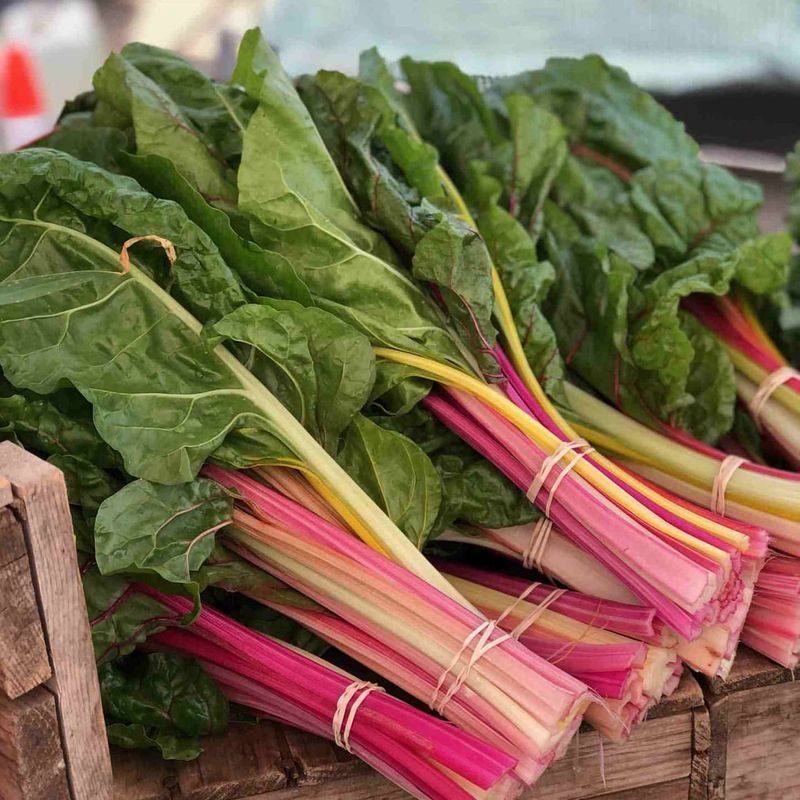
Where leafy greens are concerned, Swiss chard stands out for its iron-rich content and vibrant appearance. With its colorful stems and tender leaves, Swiss chard adds visual and nutritional value to any dish.
Whether sautéed, steamed, or added to soups, this versatile green brings a mild, slightly earthy flavor that complements various ingredients. Its iron content makes it a valuable addition to a balanced diet, supporting energy and vitality.
Moreover, Swiss chard is packed with vitamins and antioxidants, promoting overall health. Your intention is to diversify your diet with nutrient-dense greens, Swiss chard is a superb choice.
11. Kidney Beans
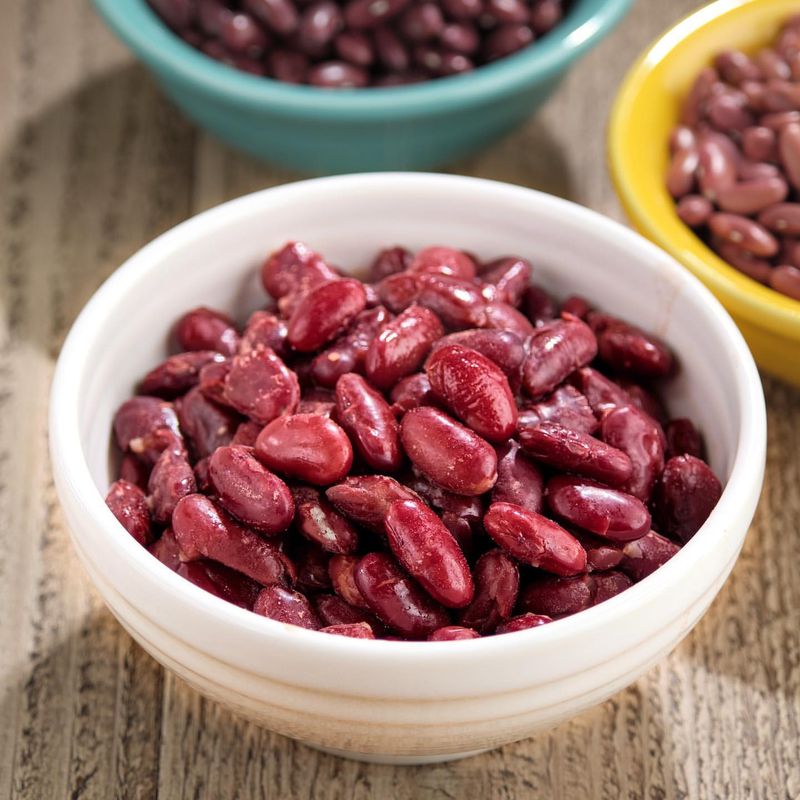
Kidney beans, with their rich, hearty flavor, offer a delightful way to boost your iron intake. These beans, often featured in stews and salads, provide a substantial source of iron, surpassing beef in nutritional value.
Their firm texture and robust taste make them a favorite in cuisines worldwide, from Tex-Mex to Indian. Incorporating kidney beans into your meals is a simple way to enhance flavor and nutrition simultaneously.
Furthermore, they’re high in protein and fiber, supporting digestive health and satiety. If you’re in search of a nourishing iron source, consider adding kidney beans to your culinary repertoire.
12. Amaranth
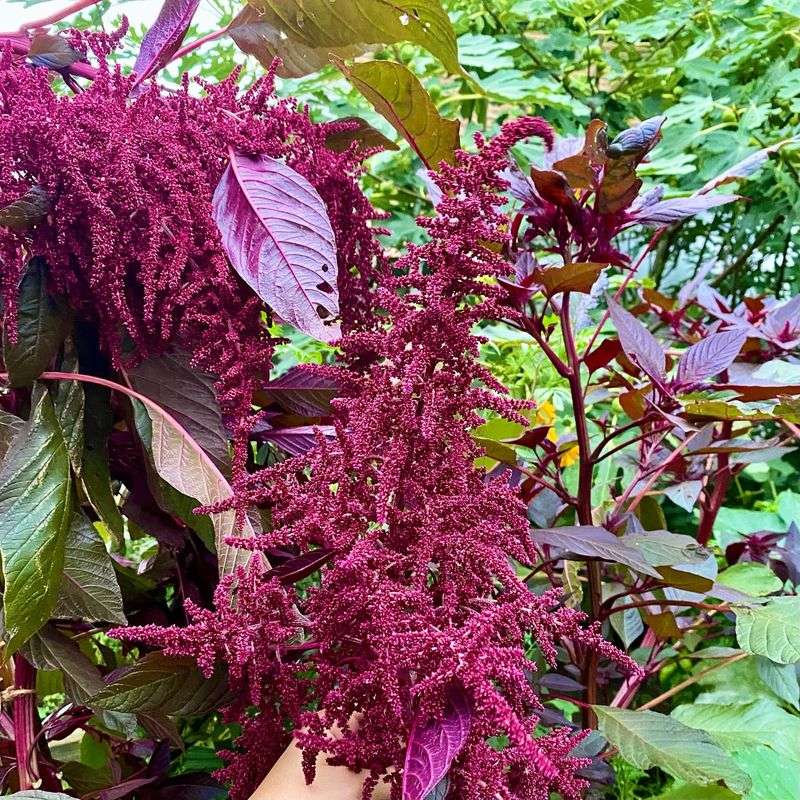
Amaranth, an ancient grain, continues to captivate modern palates with its iron-rich content and nutty flavor. Though lesser-known, this grain provides a unique alternative to traditional staples like rice and oats.
How can amaranth elevate your meals? Its versatility allows it to be used in porridge, salads, or even as a flour substitute in baking. The possibilities are as diverse as they are delicious.
In addition to iron, amaranth supplies essential amino acids and fiber, making it a nutritional powerhouse. If you’re seeking to explore new grains and boost your iron intake, amaranth is a worthy consideration.
13. Sunflower Seeds
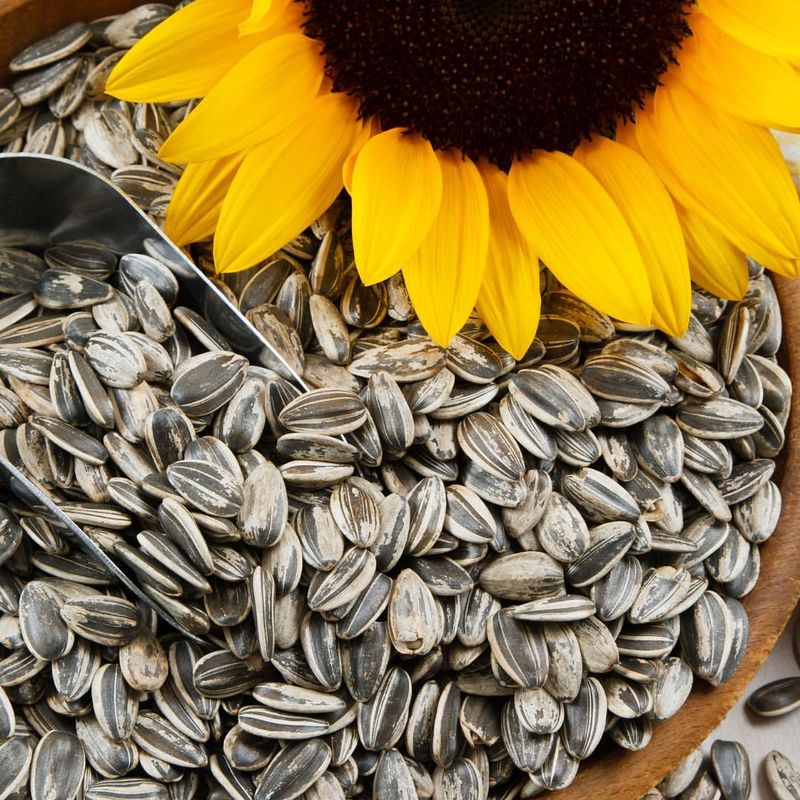
Sunflower seeds, often enjoyed as a snack, provide an unexpected source of iron. Their mild, nutty taste and crunchy texture make them a delightful addition to both sweet and savory dishes.
How can you incorporate these seeds into your diet? Whether sprinkled over salads or added to granola, sunflower seeds offer a simple way to boost flavor and nutrition. Their versatility lends itself to endless culinary creations.
Moreover, sunflower seeds are rich in healthy fats and vitamin E, supporting overall wellness. Are you eager to enhance your meals with an iron-rich ingredient, consider sunflower seeds.
14. Beet Greens
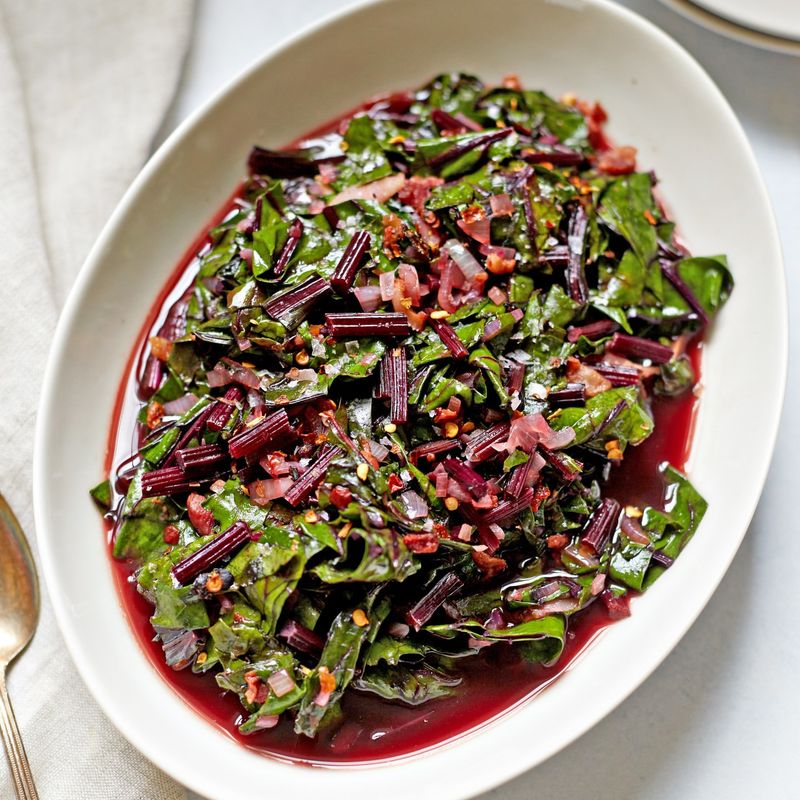
Beet greens, often overshadowed by their root counterpart, hold a hidden treasure trove of nutrients, including iron. These leafy greens, with their earthy flavor, offer a delightful way to diversify your diet.
Whether sautéed, steamed, or added to smoothies, beet greens provide a tender texture and rich taste that enhances a variety of dishes. Their iron-rich profile supports a balanced diet and contributes to overall vitality.
Furthermore, beet greens are abundant in vitamins and minerals, bolstering your health. Beet greens are a commendable choice if you’re in search of a nutritious green to enrich your meals.
15. Prunes
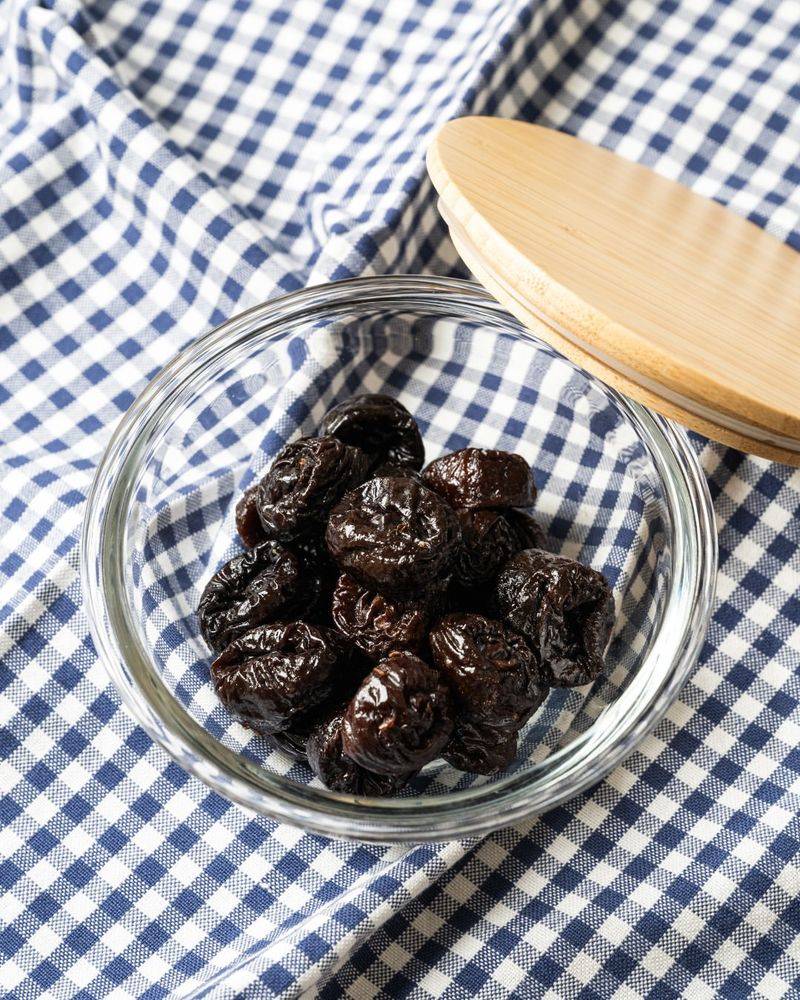
Prunes, often recognized for their role in digestive health, also offer a surprising source of iron. These dried fruits, with their sweet, rich flavor, provide a delicious way to boost your iron intake.
Whether enjoyed as a snack or incorporated into baked goods, prunes add a touch of natural sweetness and nutrition to your diet. Their chewy texture and deep taste make them a versatile ingredient.
In addition to iron, prunes supply dietary fiber and antioxidants, promoting overall well-being. Maybe you are looking to enhance your meals with a nutritious and flavorful option, prunes are worth exploring.
16. Oats
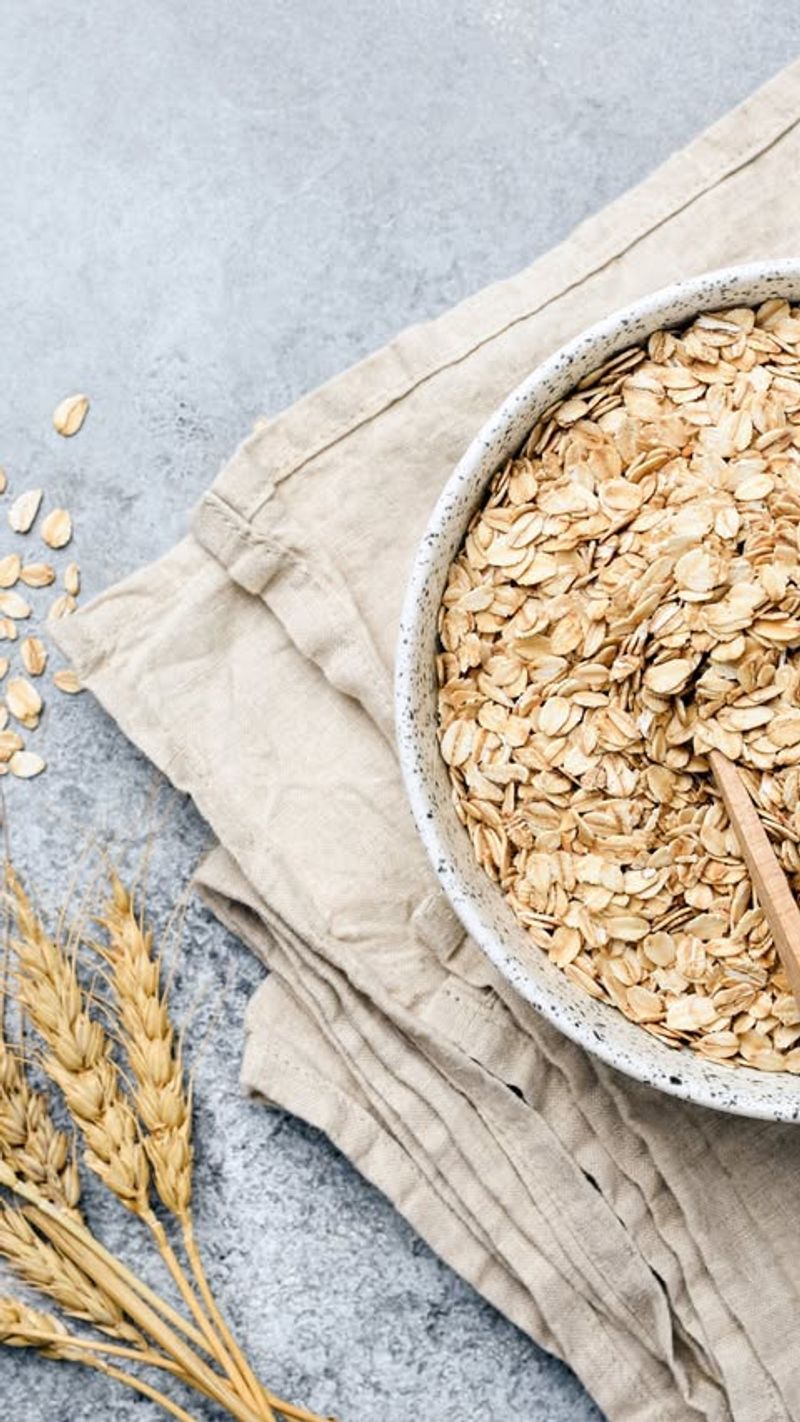
Oats, a beloved breakfast staple, offer more than just comfort on a chilly morning. These grains provide a substantial source of iron, making them an excellent addition to an iron-rich diet.
Whether prepared as oatmeal, granola, or included in baked goods, oats offer a hearty texture and mild flavor that pairs well with various ingredients. Their versatility ensures there’s an oat-based dish for every palate.
Moreover, oats are rich in fiber and protein, supporting digestive health and satiety. If you’re eager to boost your iron intake with a familiar favorite, consider the humble yet mighty oat.
17. Edamame
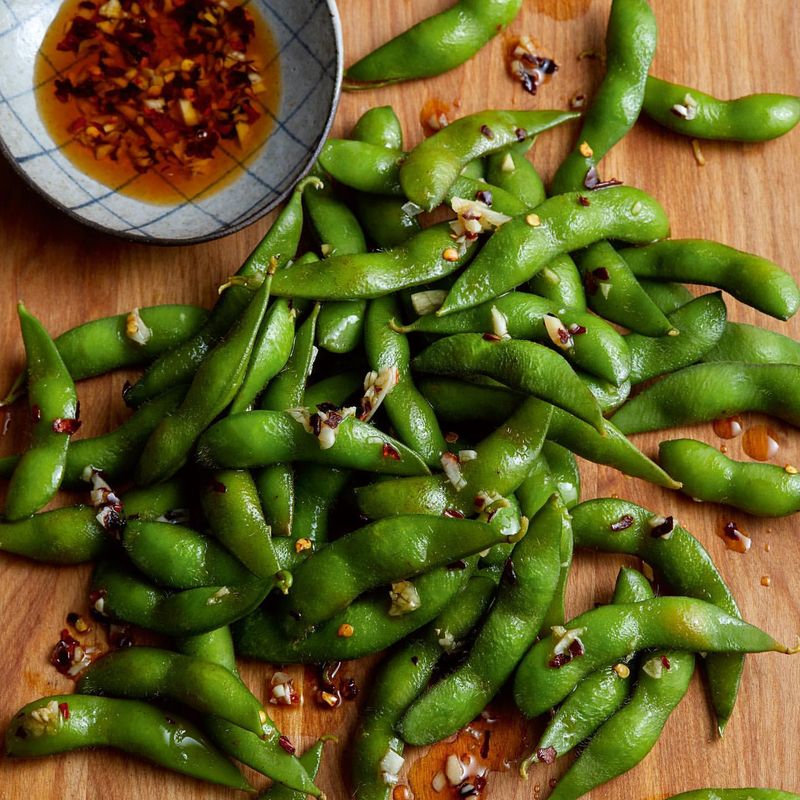
Edamame, those bright green soybean pods, serve as an enjoyable and iron-rich snack. Often featured in Asian cuisines, edamame provides a fresh, slightly sweet flavor that delights the senses.
Whether steamed, boiled, or added to salads, edamame offers a simple yet effective way to enhance your iron intake. Their tender texture and vibrant color make them a visually appealing addition to any dish.
In addition to iron, edamame is high in protein and fiber, promoting overall health. Opting for new snacks or sides, consider incorporating edamame for a nutritious and delicious option.
18. Molasses

Molasses, often used as a sweetener, holds a surprising wealth of iron within its rich, thick syrup. This byproduct of sugar refining offers a unique flavor, adding depth and complexity to various dishes.
Whether drizzled over pancakes or incorporated into baked goods, molasses enhances flavor while contributing valuable nutrients. Its robust taste pairs well with both sweet and savory recipes.
Furthermore, molasses supplies essential minerals like calcium and magnesium, supporting overall well-being. If you’re looking to diversify your ingredient list with an iron-rich alternative, molasses is a flavorful choice.
19. Cashews
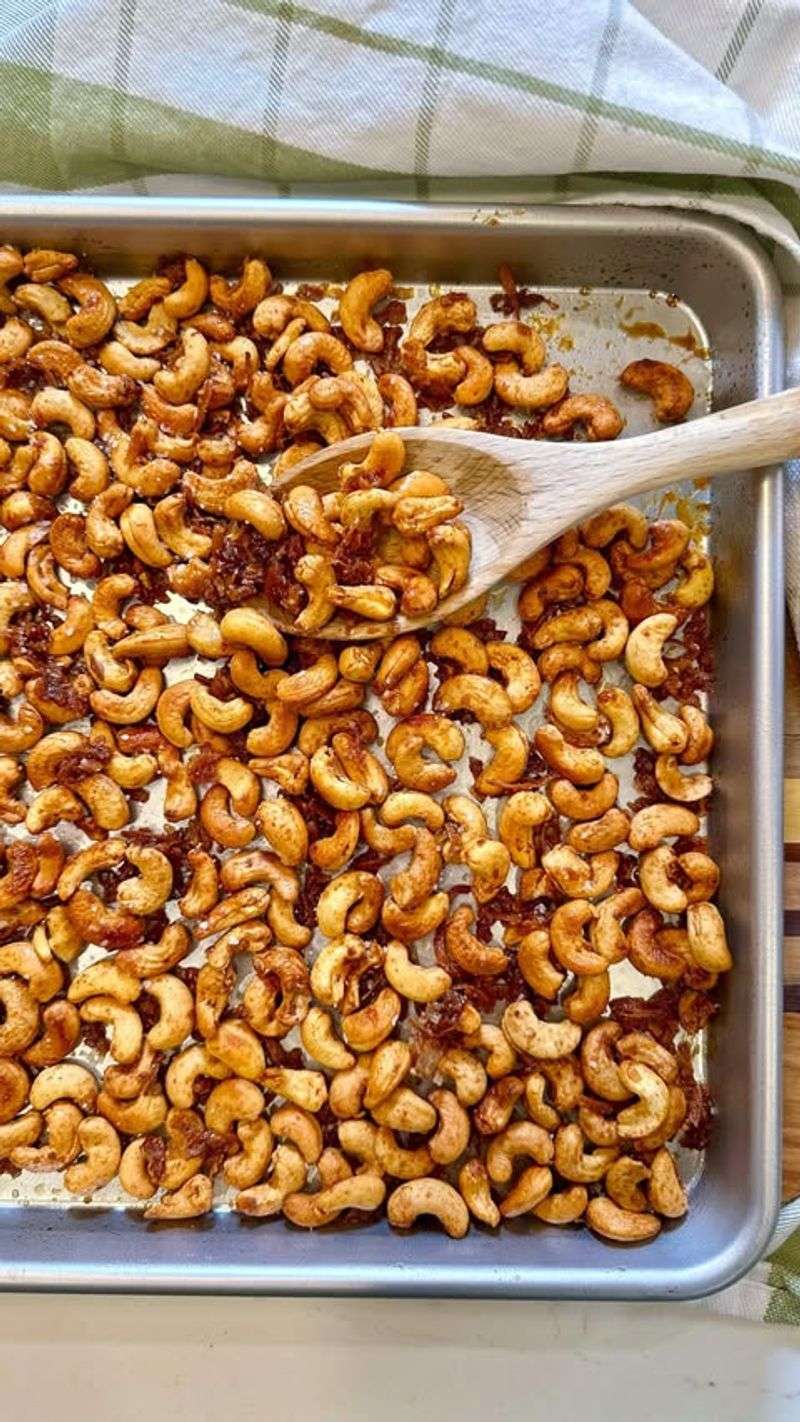
Cashews, those creamy nuts, bring a delightful combination of taste and nutrition to your diet. Their iron-rich content surpasses that of beef, offering a satisfying snack with added health benefits.
Whether blended into creamy sauces or enjoyed on their own, cashews provide a rich, buttery flavor that complements a variety of dishes. Their versatility makes them a popular choice in both sweet and savory recipes.
Additionally, cashews are high in healthy fats and magnesium, promoting overall wellness. Hunting a nutritious snack or ingredient, try the humble yet flavorful cashew.
20. Dried Apricots
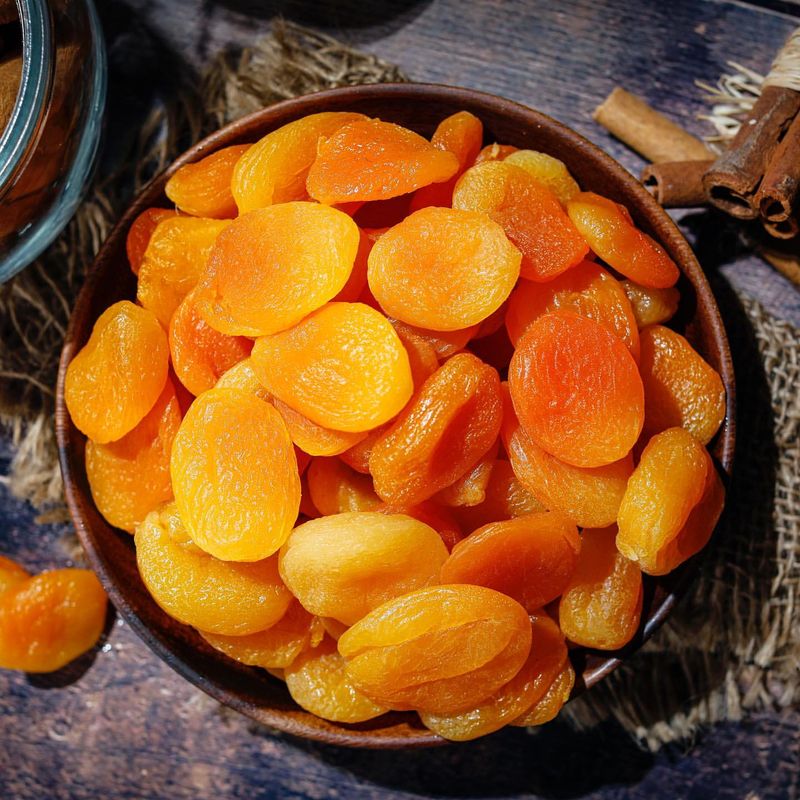
Dried apricots, with their vibrant orange hue, offer more than just a sweet treat. These dried fruits provide a substantial source of iron, making them a delightful addition to your diet.
Whether enjoyed as a snack or added to salads and desserts, dried apricots bring a burst of natural sweetness and nutrition to your meals. Their chewy texture and tangy taste make them a versatile ingredient.
Moreover, dried apricots are high in dietary fiber and antioxidants, supporting overall health. Discover the dried apricots that are a delectable choice.
21. Clams
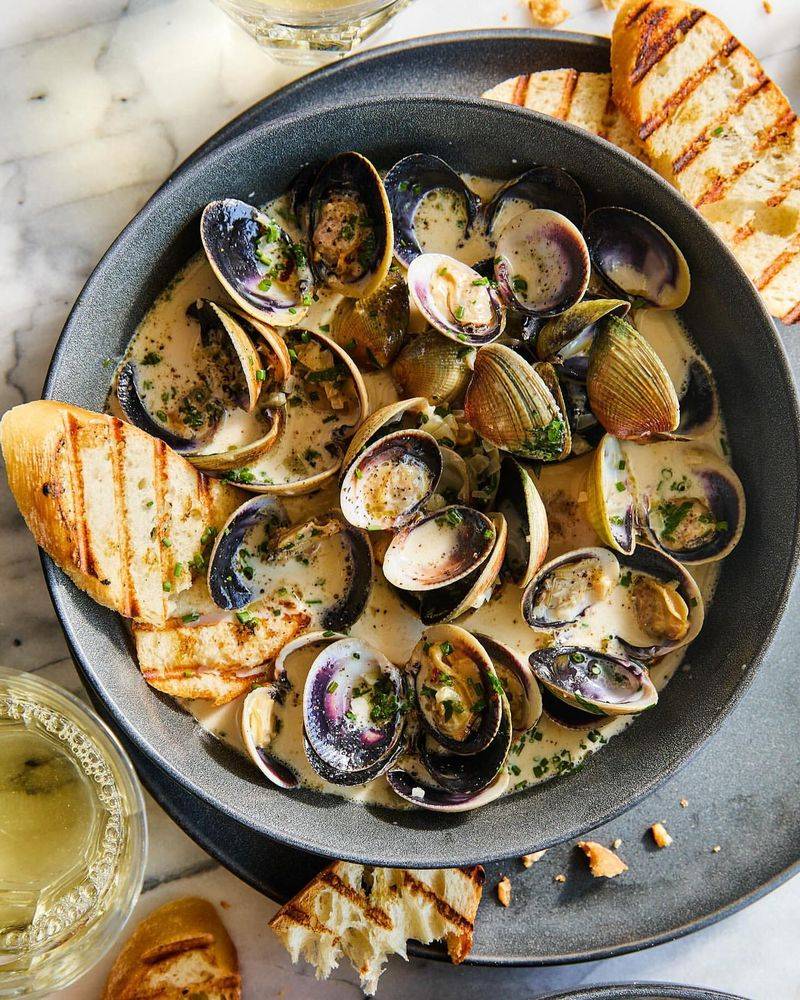
Clams, often savored in seafood dishes, offer a remarkable source of iron, surpassing even that of beef. Their tender texture and briny flavor add a unique touch to a variety of recipes.
Whether steamed, grilled, or included in chowders, clams provide a delicious way to boost your iron intake while enjoying the flavors of the sea. Their rich taste complements both light and hearty dishes.
In addition to iron, clams are high in protein and vitamin B12, supporting overall vitality. If you’re seeking a savory and nutritious addition to your meals, clams are a splendid choice.
22. Tahini
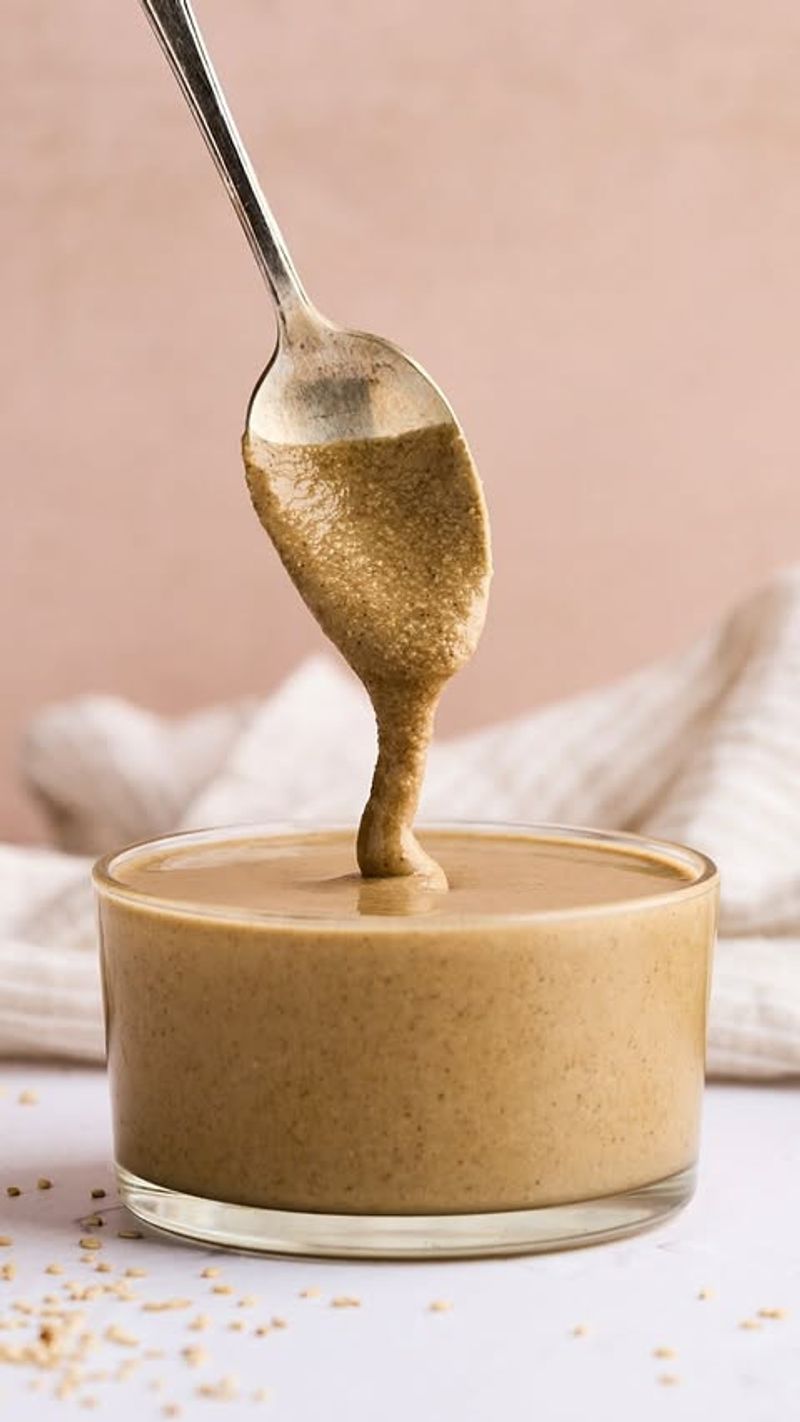
Tahini, a smooth paste made from sesame seeds, brings an iron-rich dimension to your culinary creations. With its creamy texture and nutty flavor, tahini complements both sweet and savory dishes.
Whether used as a dip, dressing, or sauce, tahini provides a delightful way to incorporate essential nutrients into your meals. Its versatility allows you to explore endless culinary possibilities.
Moreover, tahini is rich in healthy fats and calcium, promoting overall wellness. Tahini is a must-try ingredient if you are interested to experiment with food.
23. Pistachios
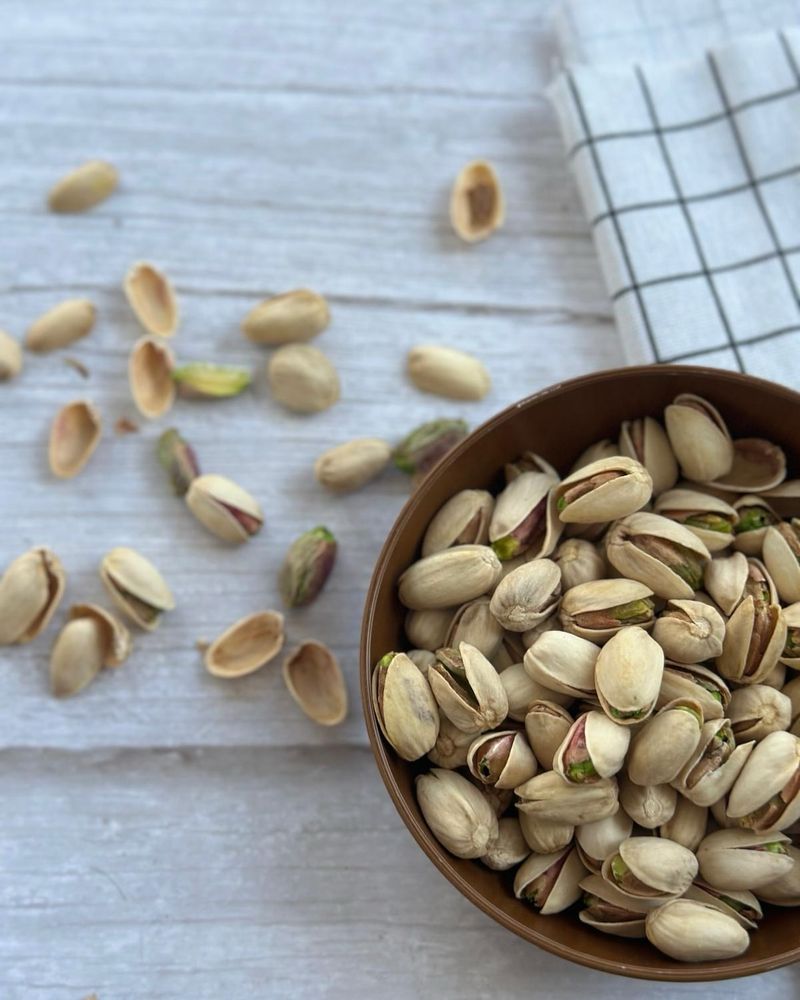
Pistachios, those vibrant green nuts, offer a delightful combination of taste and nutrition. Their iron-rich content makes them a valuable addition to any diet, surpassing beef in iron levels.
Whether enjoyed on their own or incorporated into dishes, pistachios provide a rich, buttery flavor that enhances a variety of recipes. Their unique taste and texture make them a popular choice for both snacks and culinary creations.
In addition to iron, pistachios are high in healthy fats and antioxidants, supporting overall health. Interested to eat a more nutritious snack or ingredient, consider the flavorful pistachio.
24. Broccoli
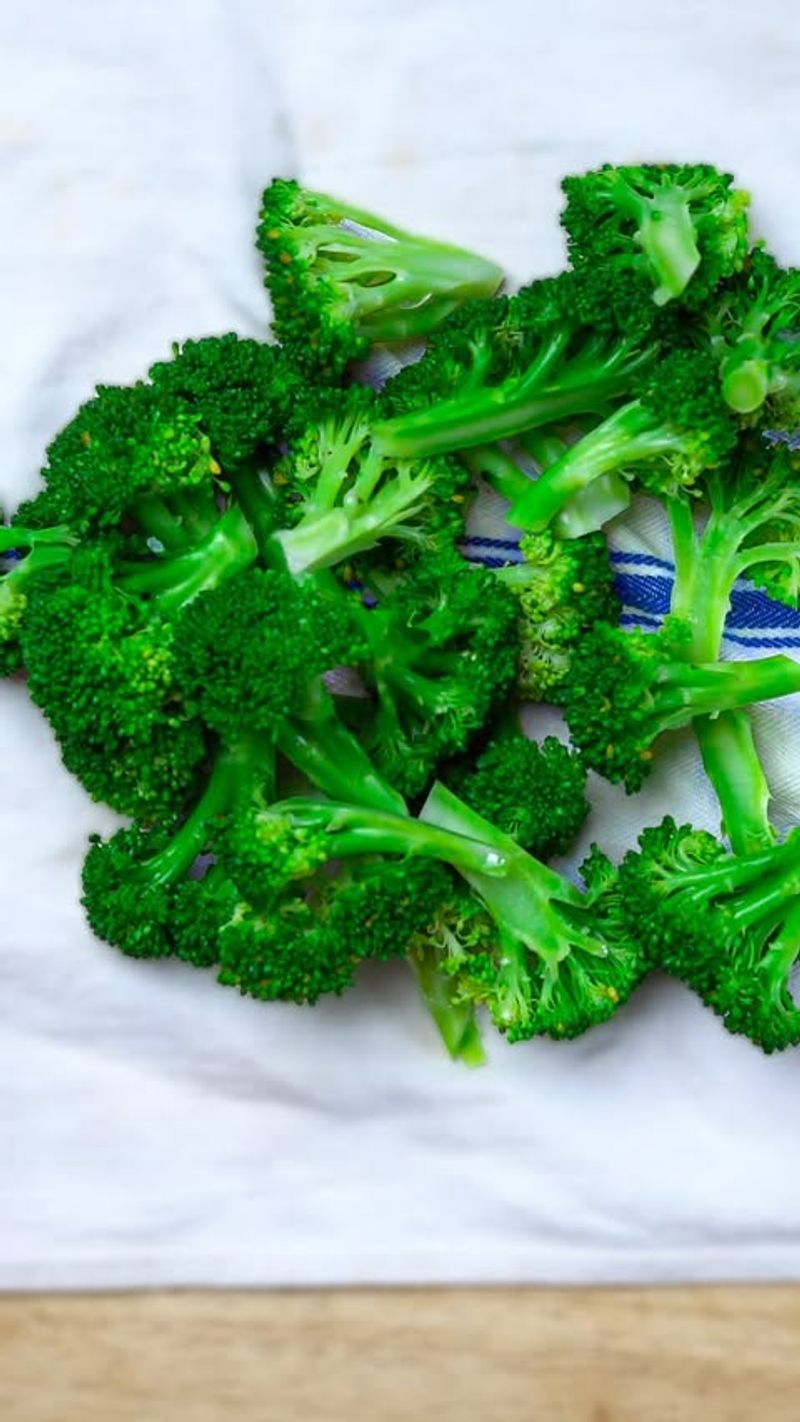
Broccoli, often celebrated for its health benefits, offers an impressive source of iron. This cruciferous vegetable, with its crisp texture and mild flavor, fits seamlessly into a variety of dishes.
Whether roasted, steamed, or stir-fried, broccoli provides a delicious way to boost your iron intake. Its versatility ensures there’s a broccoli dish for every palate, making it a staple in many diets.
Moreover, broccoli is rich in vitamins C and K, supporting overall wellness. If you’re seeking a nutritious and versatile vegetable, broccoli is a worthy addition to your meals.
25. Pine Nuts
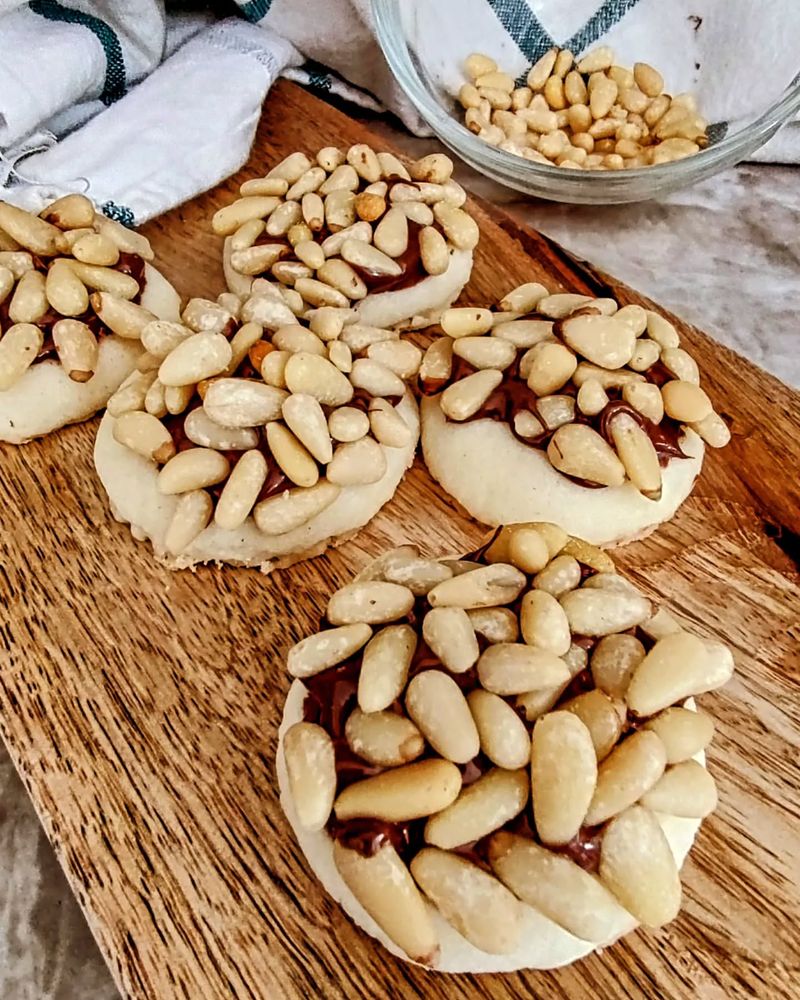
Pine nuts, those delicate, buttery seeds, offer an unexpected source of iron. Their rich, nutty flavor adds a touch of sophistication to both sweet and savory dishes.
How can you incorporate pine nuts into your meals? Whether tossed in salads, blended into pesto, or sprinkled over desserts, these seeds provide a delightful way to enhance flavor and nutrition.
Furthermore, pine nuts are high in healthy fats and magnesium, promoting overall well-being. Exploring new flavors and boosting your iron intake, is possible with delicious pine nuts.
26. Watercress
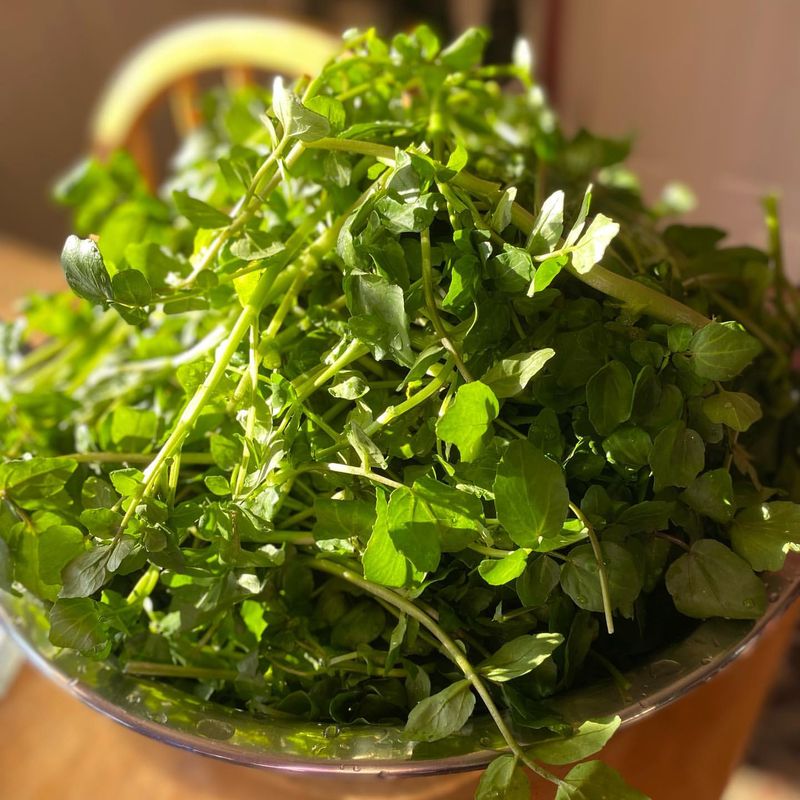
Watercress, a peppery green, offers an impressive source of iron, making it a valuable addition to any diet. With its delicate leaves and robust flavor, watercress complements a variety of dishes.
Whether included in salads, sandwiches, or soups, watercress provides a refreshing burst of flavor and nutrition. Its versatility allows you to experiment with endless culinary creations.
Moreover, watercress is rich in vitamins A and C, supporting overall health. Watercress is a delightful, healthy and nutritious choice.
27. Raisins
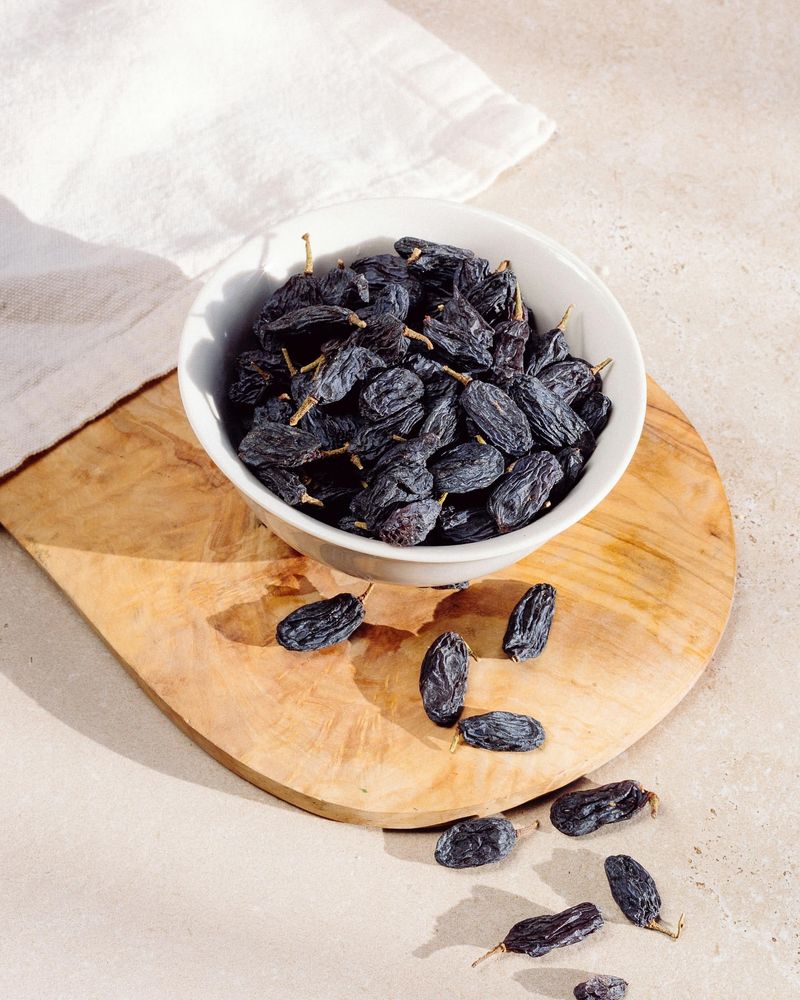
Though small in size, raisins pack a powerful punch of iron, making them a delightful addition to your diet. Their sweet, chewy texture adds a burst of flavor to both sweet and savory dishes.
How can you incorporate raisins into your meals? Whether sprinkled over cereal, added to baked goods, or enjoyed on their own, raisins offer a simple way to boost iron intake. Their versatility means endless culinary possibilities.
Furthermore, raisins are high in dietary fiber and antioxidants, supporting overall wellness. If you’re eager to enhance your meals with a nutritious and flavorful option, consider raisins.
28. Bok Choy
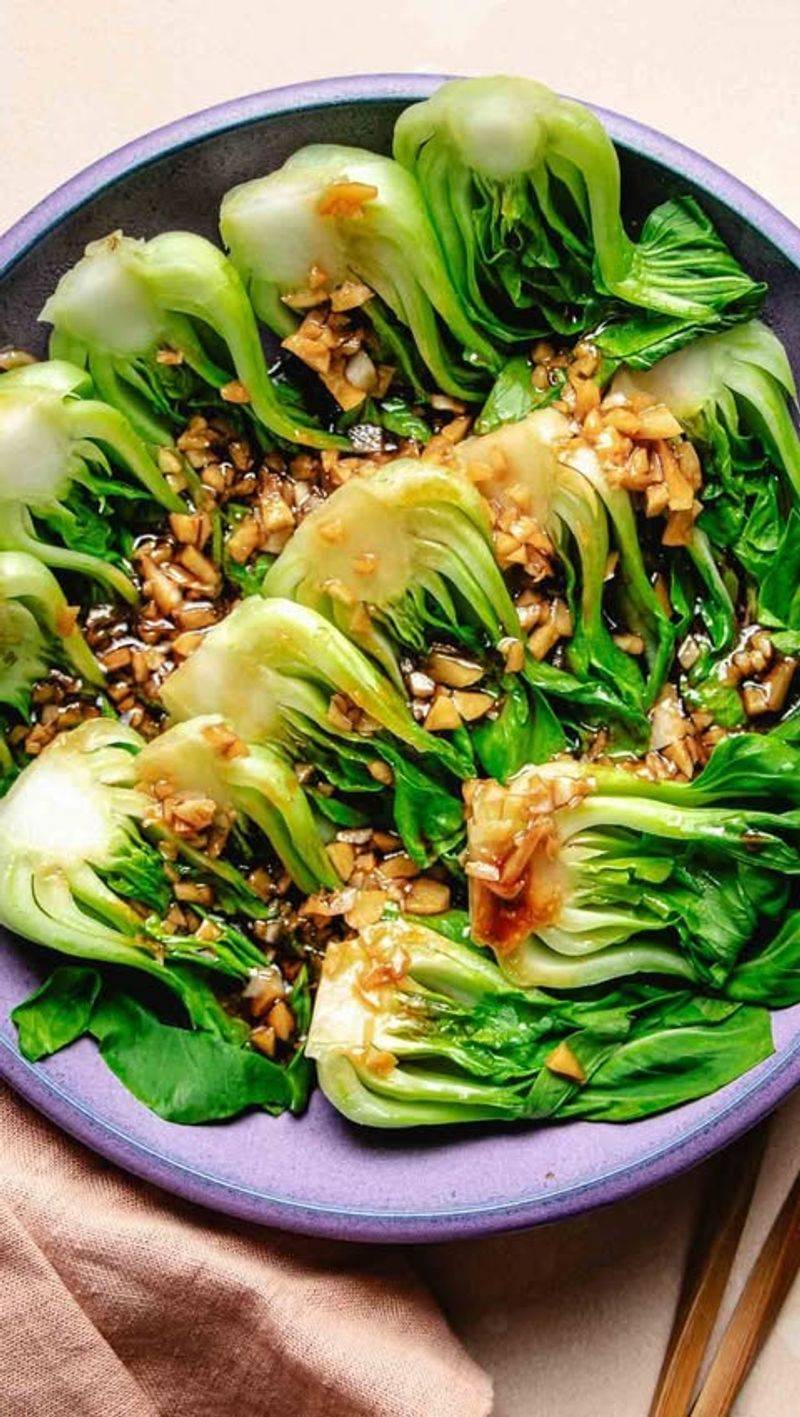
Bok choy, a beloved cruciferous vegetable, offers more than just a crisp texture. Its iron-rich content makes it a valuable addition to a balanced diet, surpassing beef in nutritional value.
With its mild, slightly sweet flavor, bok choy complements a variety of dishes, from stir-fries to soups. Its versatility ensures it fits seamlessly into many culinary styles.
Moreover, bok choy is rich in vitamins A and C, supporting overall health. A nutritious and versatile vegetable, bok choy is an excellent choice for enhancing your meals.

